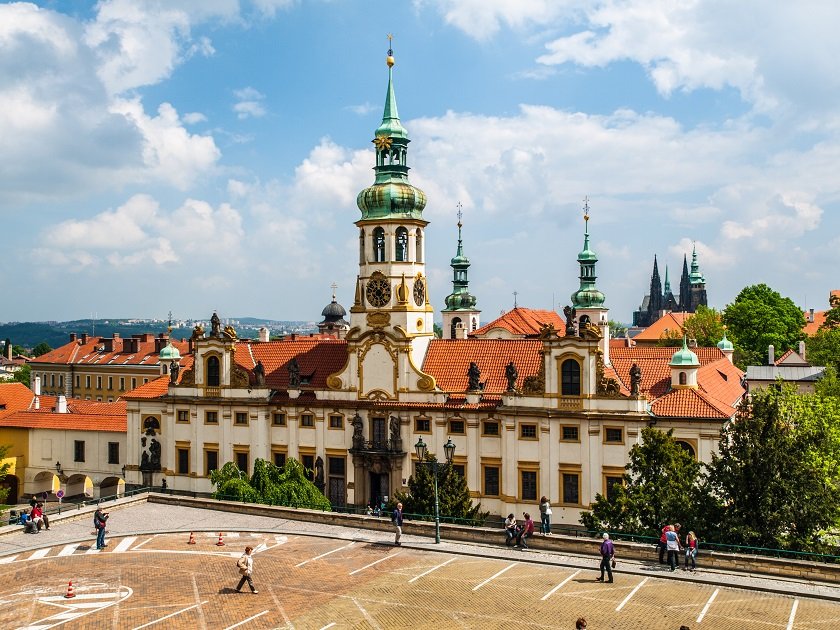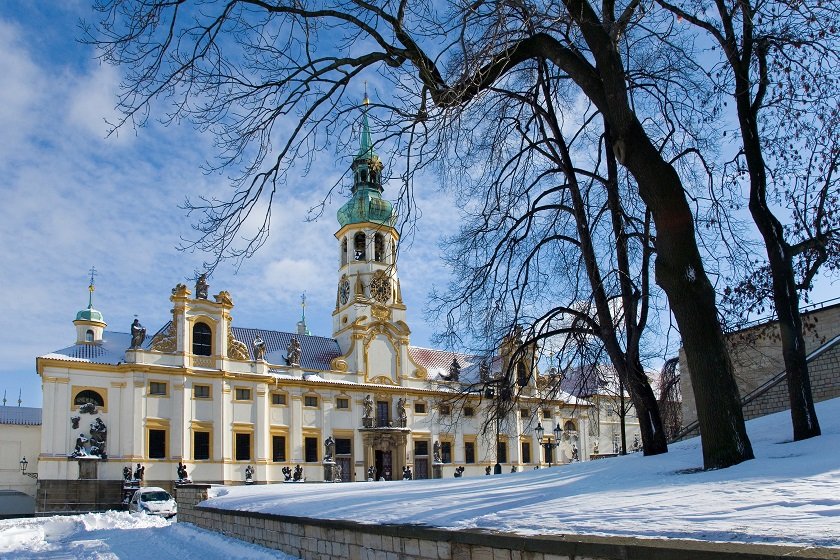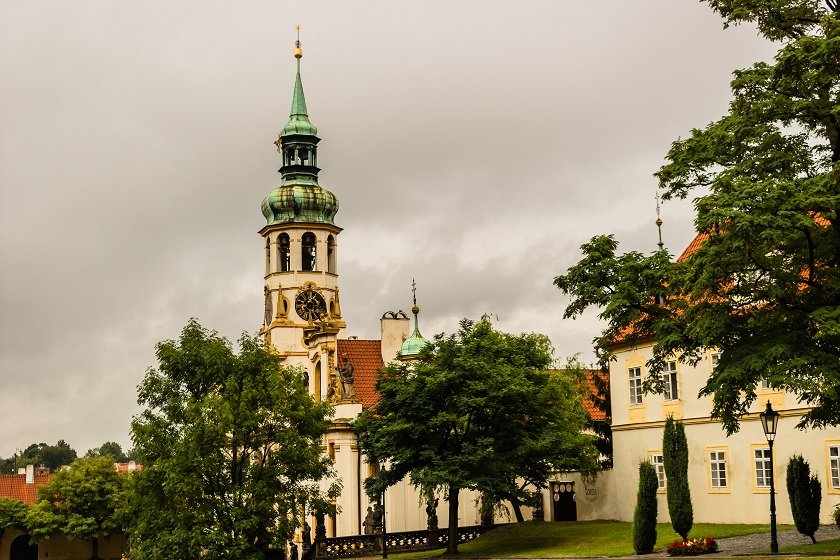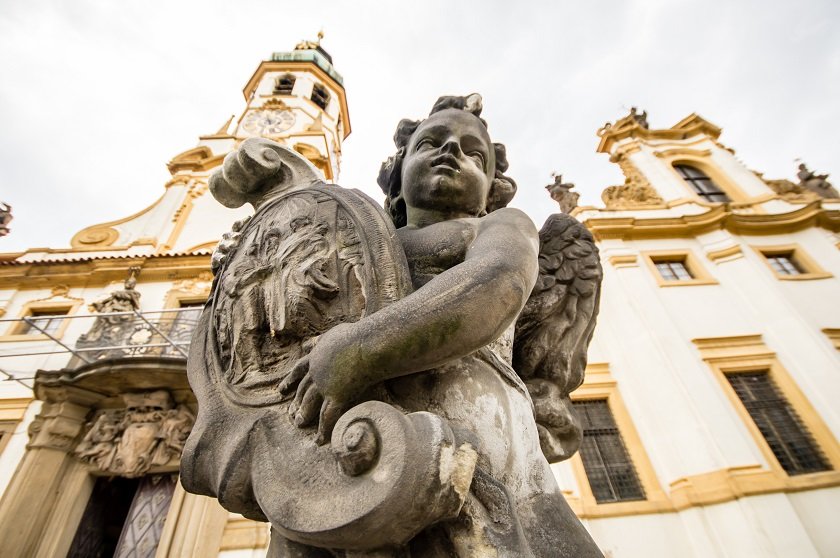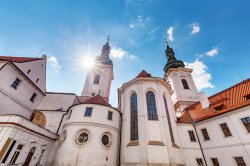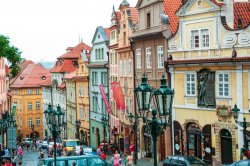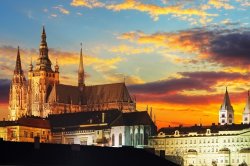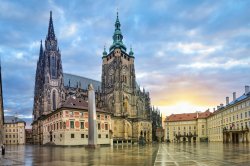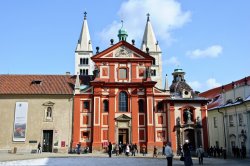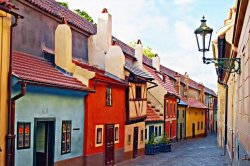Prague Loreto
The Prague Loreto is a Baroque complex on Loreta Square in Hradčany. Its most notable and central building is the Holy House (Santa Casa), a pilgrimage site dedicated to the Virgin Mary. Benigna Katharina von Lobkowicz had the small building built in 1626 as a replica of the chapel in Loreto, southern Italy. It was built in the traditional way, next to the Capuchin monastery. It is considered the most elaborate Loreto in the world. Later, its courtyard was surrounded by arched corridors – cloisters – connecting the Loreto with the monastery at the Church of the Angelic Virgin Mary. The corridors are adorned with statues of male and female patron saints who help mainly sick people. The most bizarre is the statue of a bearded lady, St Wilgefortis, whose beard was supposed to save her from a marriage to a pagan husband. There is also the exhibition of the Loreto Treasure on one of the floors of the cloisters, which consists of gifts donated by pilgrims and wealthy noblemen. Part of the treasure is also the diamond monstrance called “Prague Sun” (a decorated vessel made of precious metals). Visitors can also see the largest historical carillon in Europe, created by Petr Neumann in the 17th century. It consists of 30 bells and it was installed on two floors under the bell tower. Opposite the Holy House, which is also called “Loreto”, stands the Church of the Nativity of Our Lord with a Rococo interior.
Useful information for visitors
Public transport connections
Brusnice tram stop
Malostranská bus stop, tram stop, metro station (green line)
Opening hours and admission
For up-to-date information about the opening hours and admission fees of the Prague Loreto, visit the official website.
Interesting facts about Prague Loreto
In addition to visiting the museum collections of the Prague Loreto and participating in regular religious services, visitors can also enjoy listening to the carillon, on which concerts are performed by carillonneurs on Sundays and holidays. It is possible to listen to the concert outside the Loreto, but for a more intense experience, visitors are advised to listen in the courtyard of the Loreto. More information here.
